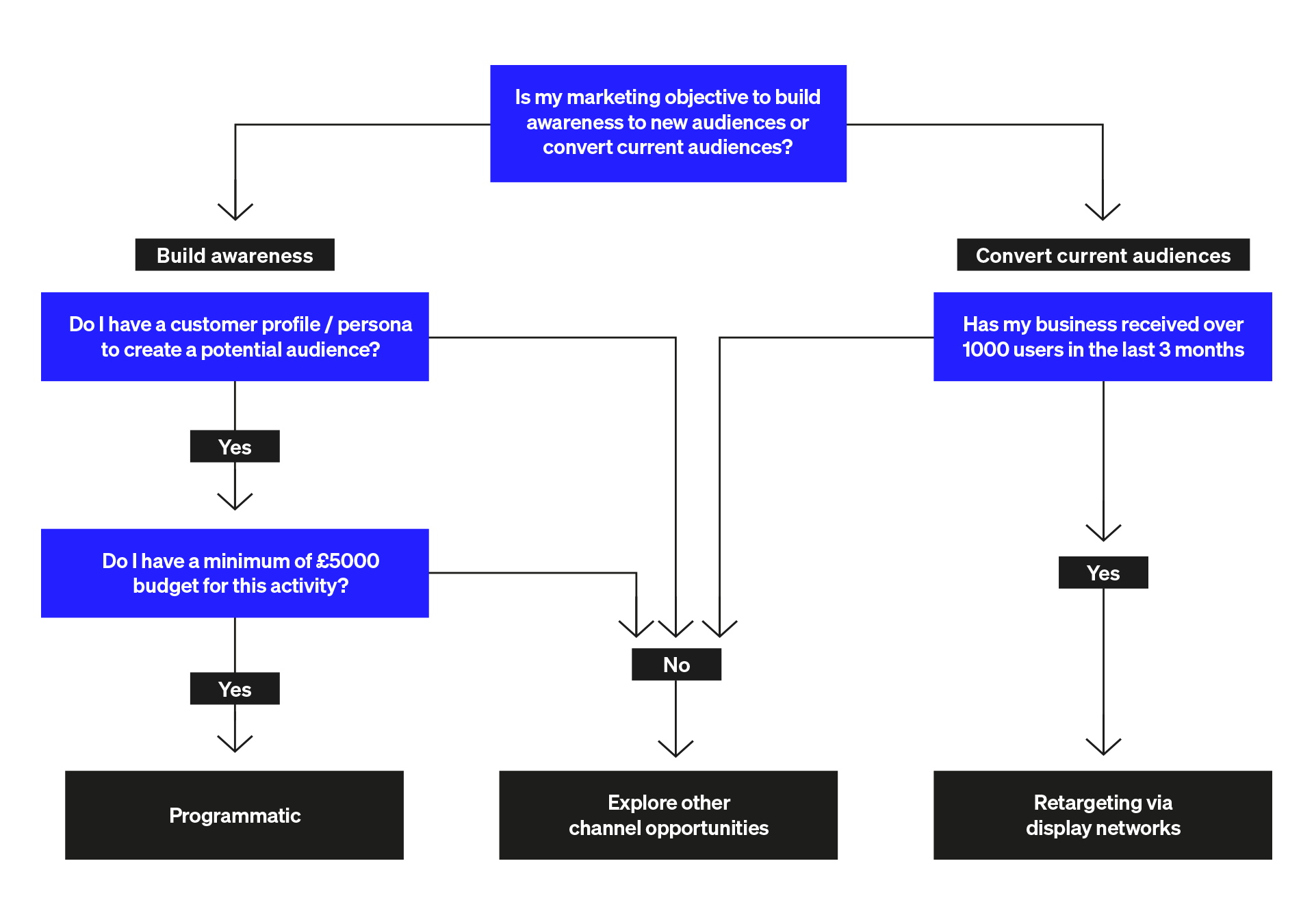In today's world, advertising is an essential tool for businesses to reach potential customers and increase their brand awareness. With the rapid advancements in technology, there are now two main types of display advertising methods that businesses can choose from - advertising on the Google Display Network and programmatic advertising. Both methods have their pros and cons and choosing the right one for your business depends on your marketing objectives and budget.
What is the Google Display Network
Google Display Network (GDN) is a vast network of websites, mobile apps, and video content where businesses can advertise their products or services using various ad formats such as banner ads, text ads, and rich media ads. To get the most out of advertising on GDN, businesses can use audiences and objectives to target specific users and achieve their marketing goals.
What is a Demand Side Platform?
A Demand Side Platform (DSP) is a type of technology platform used by advertisers, agencies and trading desks to buy and manage digital advertising inventory from multiple ad exchanges and supply-side Platforms (SSPs) through a single interface.
A DSP enables advertisers to programmatically bid on ad inventory in real-time and target specific audiences using various data signals such as demographics, interests, location and behaviour.
A DSP typically integrates with multiple data sources including third-party data providers, data management platforms (DMPs) and customer relationship management (CRM) systems to enable audience targeting and segmentation.
Overall, a DSP is a key component of programmatic advertising, which automates the buying and selling of digital advertising inventory using real-time bidding (RTB) and other advanced technologies.
Remarketing vs prospecting
Remarketing, also known as retargeting, involves targeting users who have previously interacted with a brand or visited their website. This can include users who have abandoned their cart, visited a specific product page or engaged with a brand’s content. Remarketing allows advertisers to re-engage with these users by displaying ads to them on other websites or social media platforms.
Prospecting on the other hand, involves targeting users who have not interacted with a brand before. This can be done by targeting users who fit the brand's target demographic, interests or other characteristics. Prospecting is a way for advertisers to reach new audiences who may be interested in their products or services but have not yet engaged with their brand.
The main difference between remarketing and prospecting is that remarketing targets users who are already familiar with a brand, while prospecting targets users who are new to a brand. Remarketing is often used to encourage users who have shown interest in a brand to make a purchase or take other desired actions, while prospecting is used to introduce new users to a brand and generate awareness.
Both remarketing and prospecting can be effective strategies for digital advertising, and a combination of both can help advertisers reach and engage with a range of audiences to drive conversions and business growth.
What is programmatic targeting?
Programmatic advertising is an automated way of buying and selling ad inventory using machine learning and algorithms. It allows businesses to reach their target audience across various websites and platforms through real-time bidding (RTB). To get the most out of programmatic advertising, businesses can use different targeting options and objectives to achieve their marketing goals.
Google Display Network vs Demand Side Platform
Now that we know the difference between display advertising vs programmatic, and the differences of programmatic vs display advertising, let’s review which is best for your business.
Reach
GDN is a network of websites and apps where ads can be placed by Google, while programmatic advertising through a DSP allows for bidding on ad space across a much larger number of websites and apps. This means that programmatic advertising has a wider reach than GDN.
Prospecting
While GDN allows for some targeting options based on user behaviour and interests, programmatic advertising through a DSP allows for much more advanced targeting options. With a DSP, you can target specific audiences based on a wide range of first and third-party data points such as demographics, behaviour, location, and more.
Retargeting
GDN allows advertisers to reach a vast audience of over 2 million websites and 650,000 apps, reaching over 90% of internet users worldwide. With the vast coverage across the web, this means the lower cost of using the GDN should mean better returns for pulling in the same audiences for retargeting vs a DSP.
Although setting up audience segments to allow for retargeting within Google Ads can take time, Google provide many default custom segments and smart audiences as standard within activity now.
Automation
Programmatic advertising through a DSP is a completely automated process that involves real-time bidding on ad space. GDN on the other hand, is a more manual process that involves selecting specific websites, audiences and apps to display ads on.
On both platforms, creatives can be dynamic – meaning less costs on creating assets. For better performance, we recommend a good media mix use across static, animated and video assets.
Cost
The cost of programmatic advertising through a DSP is often higher than GDN due to the advanced targeting options and the larger number of websites and apps included in the network. There is also the cost to the DSP often taken out of media spend.
Overall, GDN is a great option for brands looking to display ads on specific websites and apps within the Google network, while programmatic advertising through a DSP is a more advanced option for brands looking to target specific audiences across a wider range of websites and apps with more advanced targeting options and automation.
When deciding which platform to move forward with to handle your display activity, it’s always best to start with understanding your data and goals for the activity. Often, this can come down to the following:

Here at M3, we are masters of digital marketing and can adapt our approach to suit your business needs. We can create tailored campaigns that are highly targeted and effective to optimise your performance. Contact us for a PPC consultation today.






